This project explores the fusion of traditional hand prototyping techniques with generative AI ideation software, Vizcom. The process began with gathering various found materials for crafting a sandal, employing a modular no-glue construction technique. These materials comprised repurposed Teva straps, sheet EVA foam, one-inch rubber hose, zip ties, and paracord. The wearer's foot shape was traced onto the EVA foam, which was then cut accordingly. Rubber hose sections, cut into 2”-5” lengths, formed the shoe's outsole. These hose pieces were interlinked using zip ties. Zip ties also secured the outsole to the EVA foam, creating a unified outsole and midsole. Finally, existing Teva sandal straps were sewn onto an insole and hand-stitched to the sole unit using paracord.
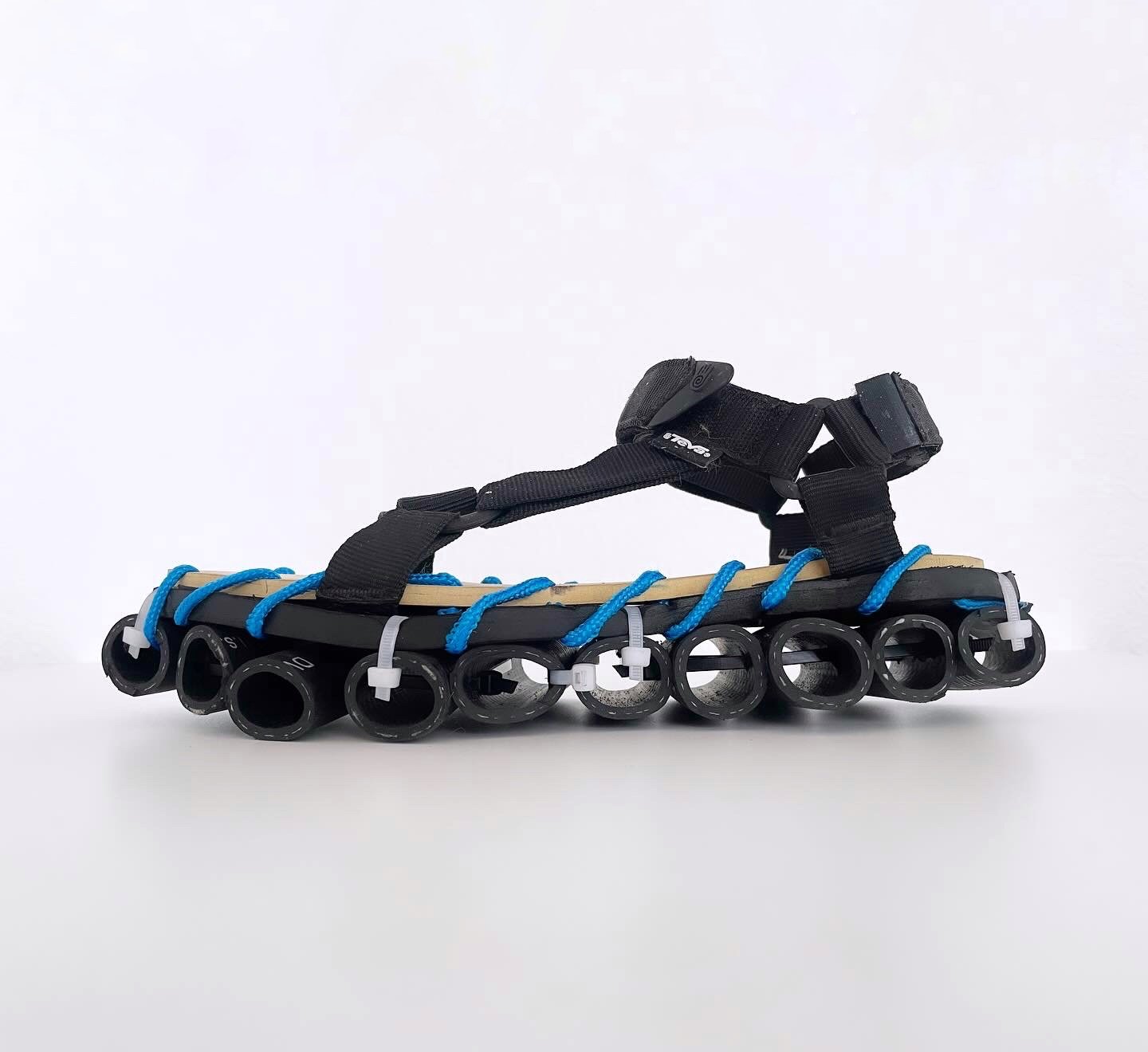
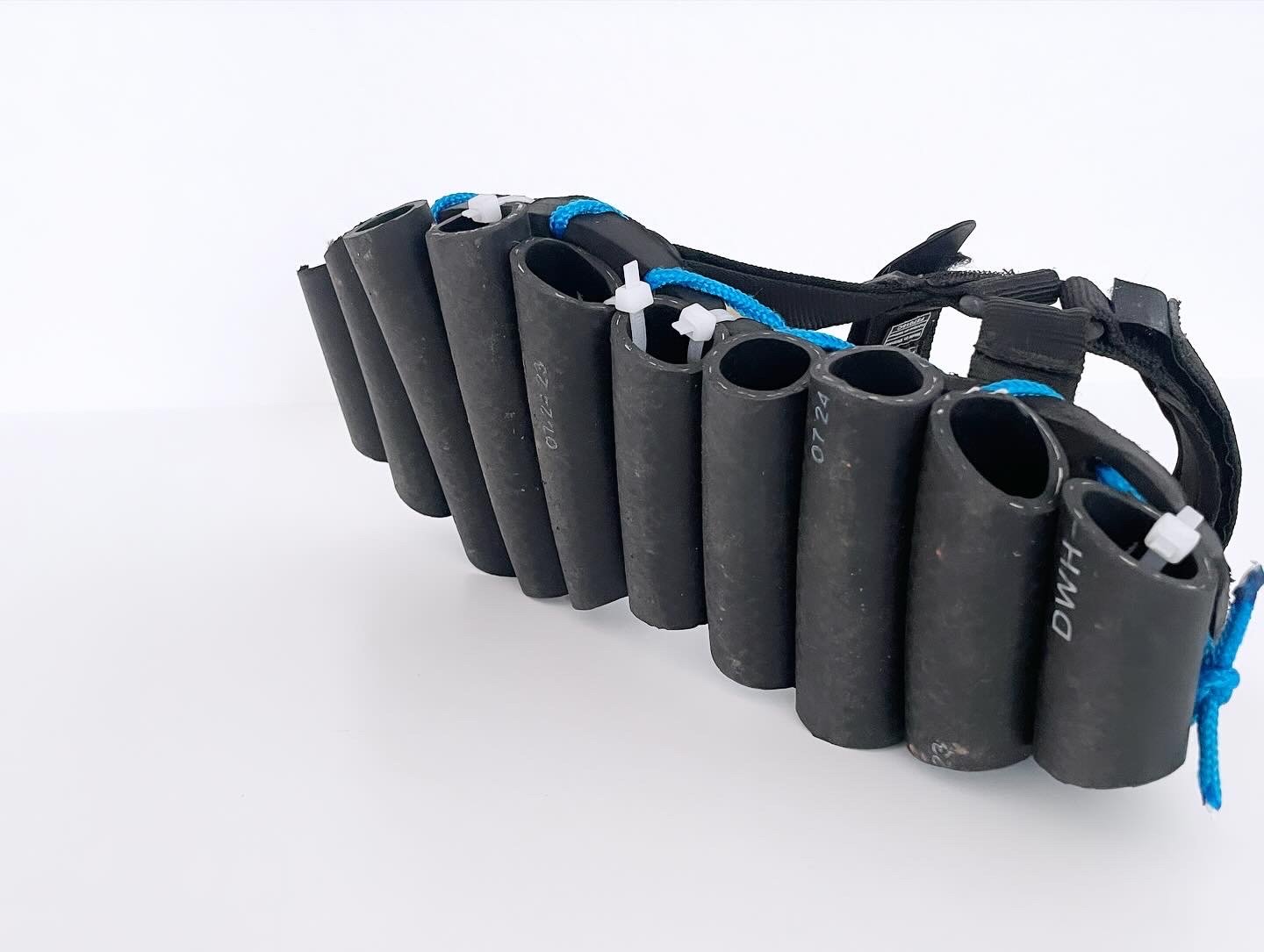
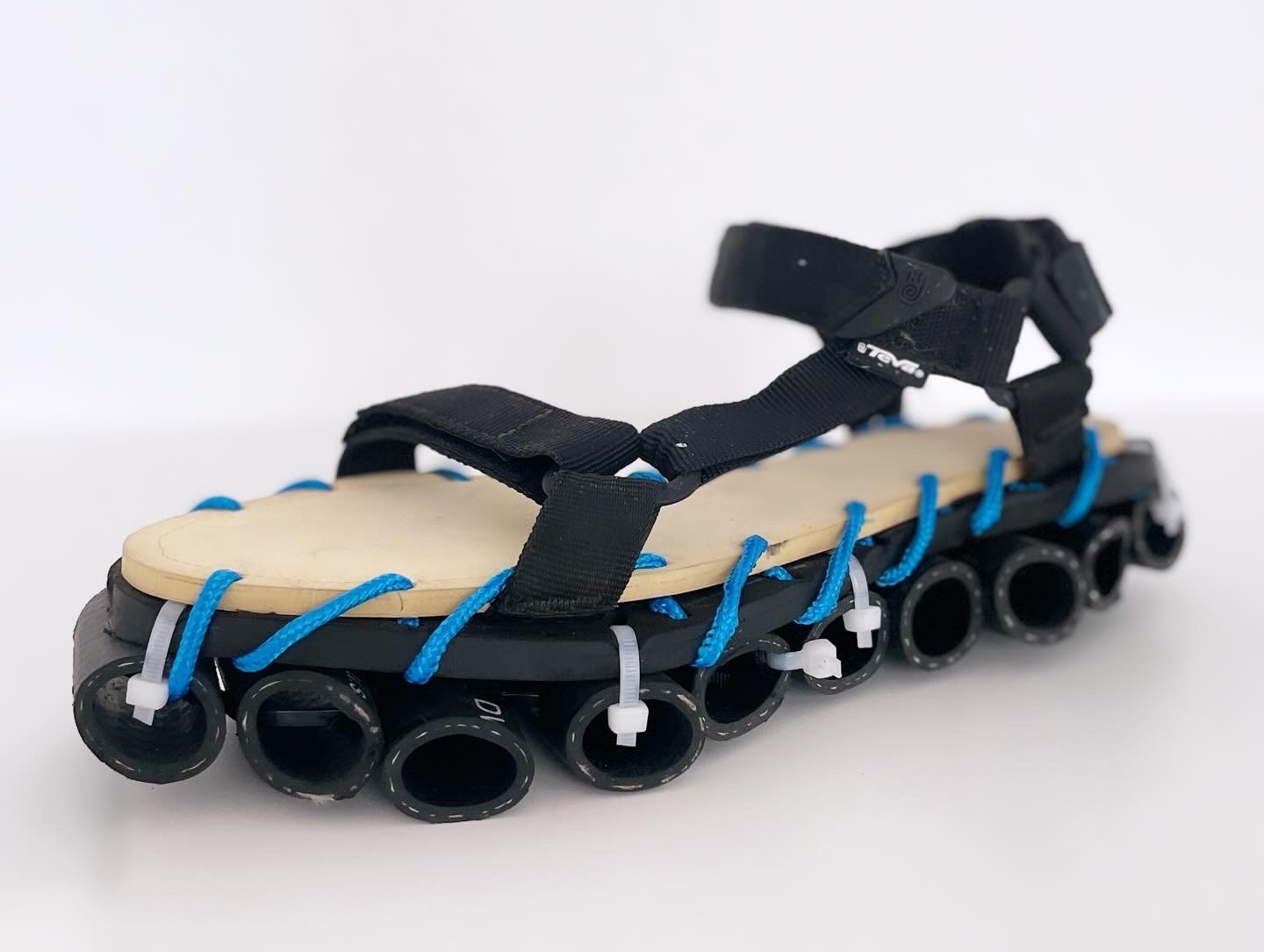
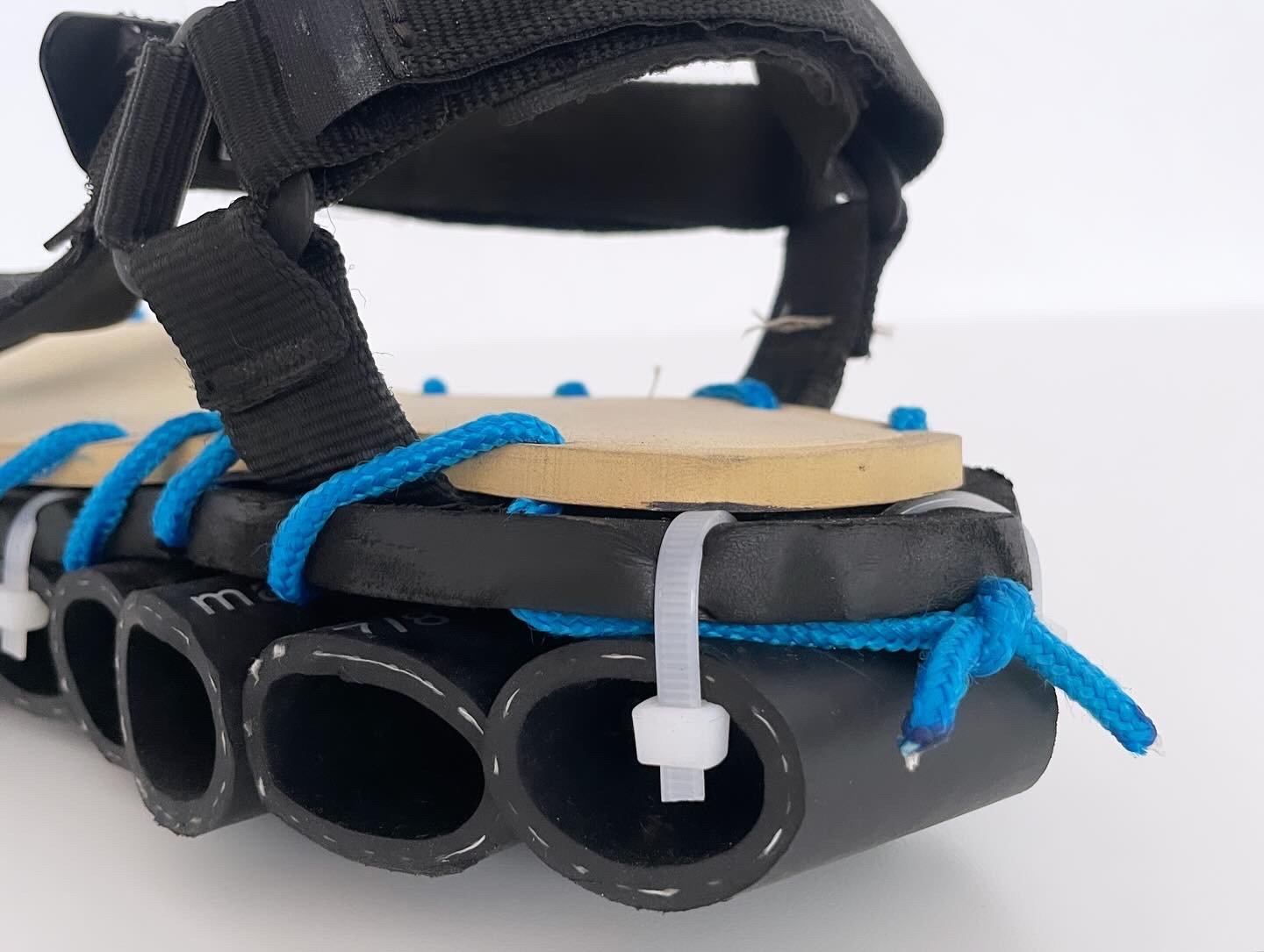
Following the prototype's completion and user testing, images of it were imported into Vizcom, a generative AI software specializing in digital ideation. After uploading the images, sketches were overlaid onto the image to make visual modifications to the design. Those overlays were accompanied by written prompts that were then translated into a new image by AI. Through a series of these iterations a final design was created to move forward with the product development of this modular sandal.

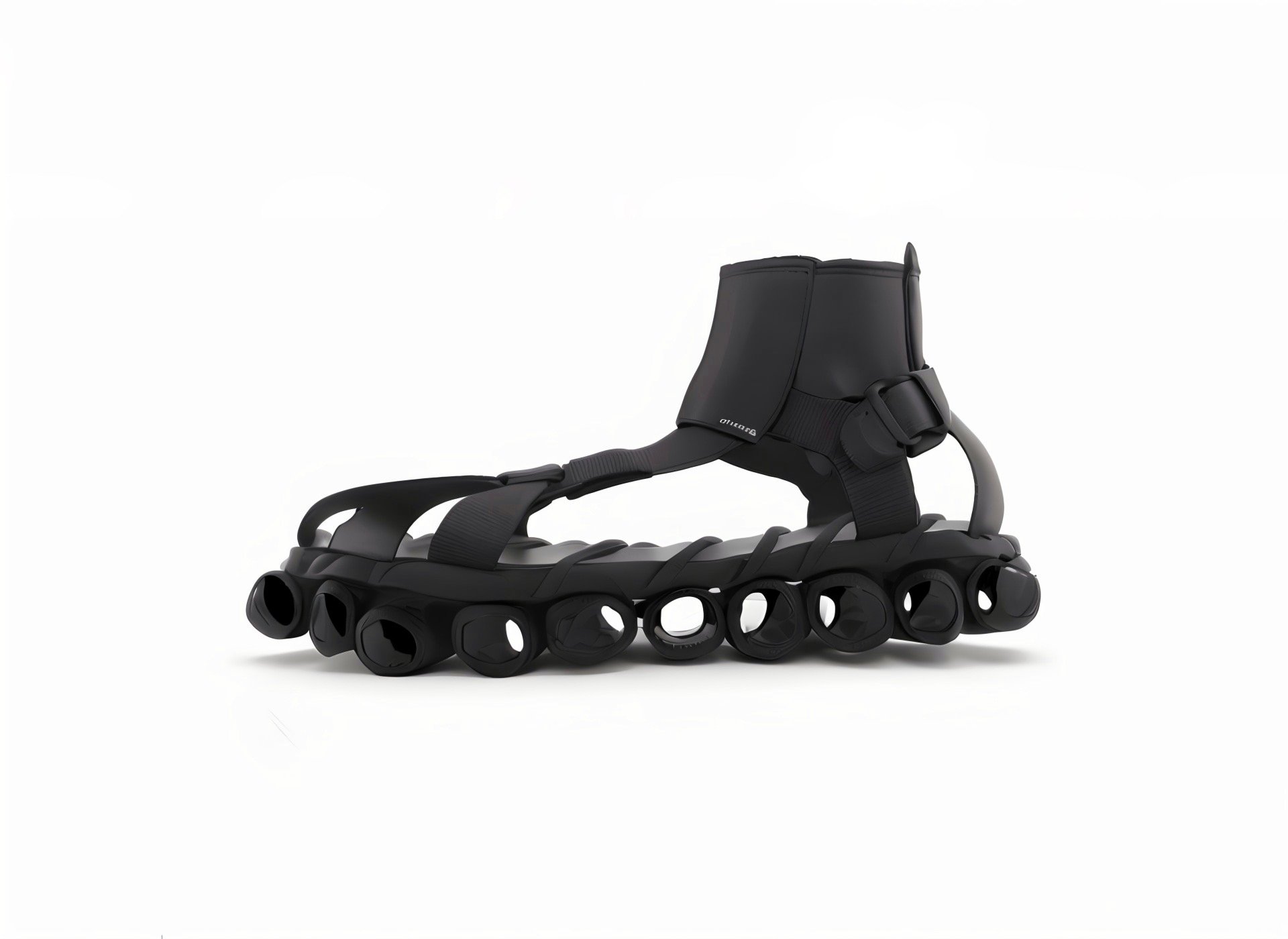
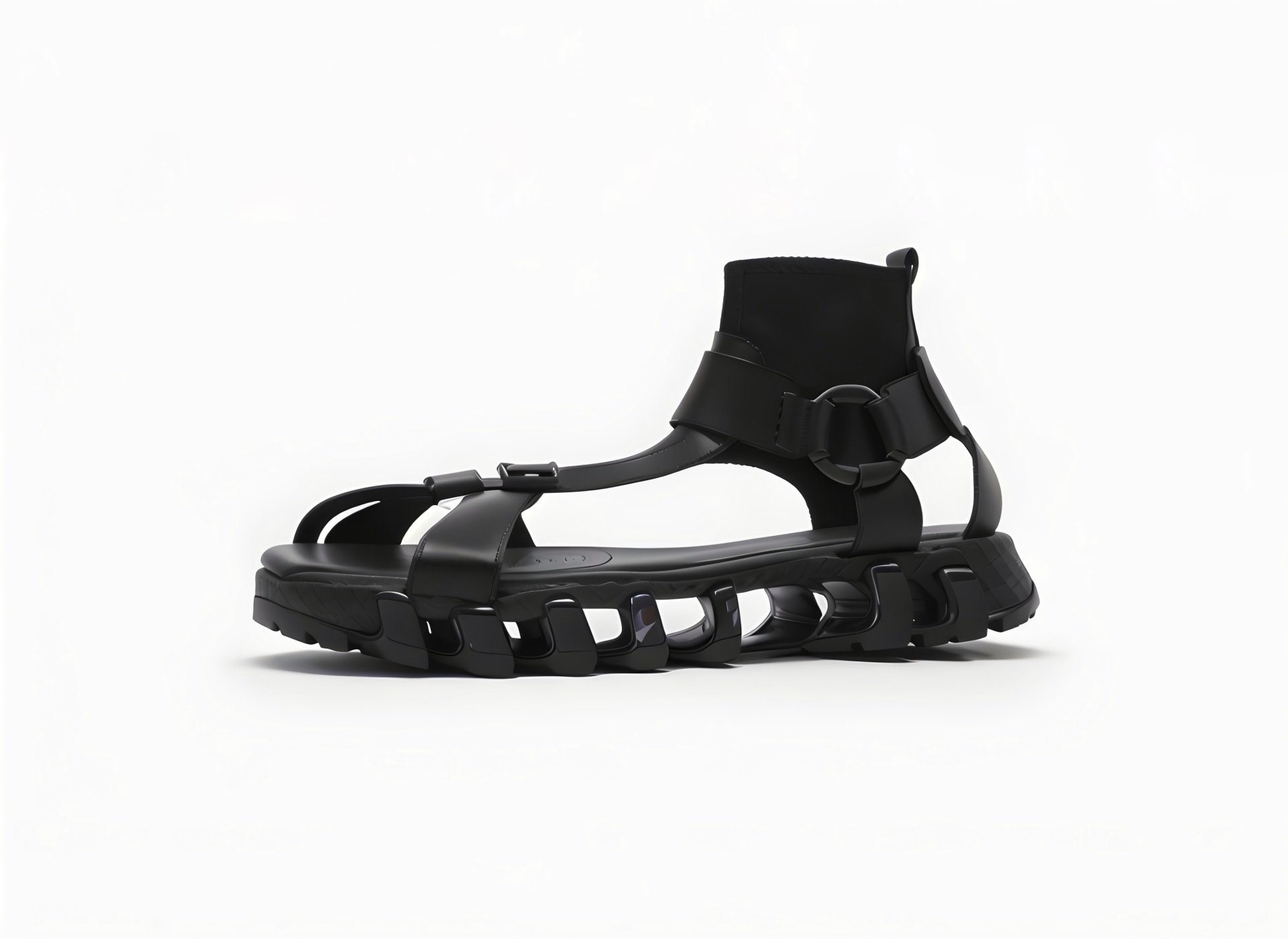
This innovative approach blends AI and manual prototyping to foster creative exploration. It's critical to acknowledge that while AI holds immense potential, it cannot entirely replace hand prototyping methods. There's an intrinsic value in the tactile experience in manual prototyping that AI cannot replicate. Furthermore, human creativity plays a vital role in the design process, offering insights and perspectives that AI algorithms may not capture.
However, integrating AI into existing design practices opens up a plethora of new possibilities. AI augments human capabilities by offering rapid iteration, and alternative insights into design ideation. By leveraging AI’s strengths alongside traditional methods, designers can streamline workflows, accelerate the design process, and explore innovative design concepts that may have been previously unattainable.
Ultimately, the combination of AI and manual prototyping empowers designers to push the boundaries of creativity, fostering a dynamic environment where traditional craft practices merge with cutting-edge technology to inspire new design solutions.

